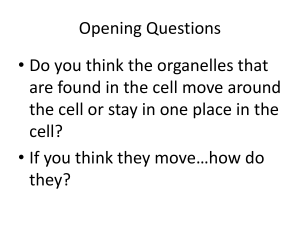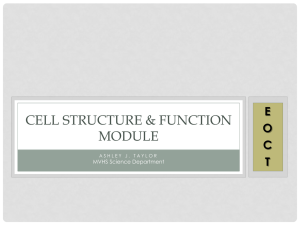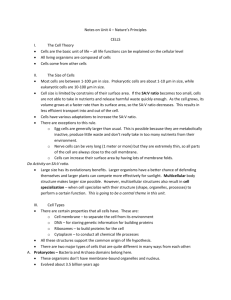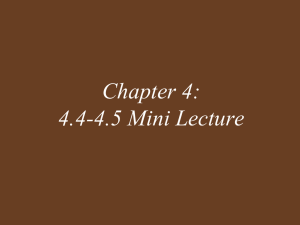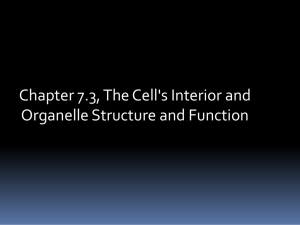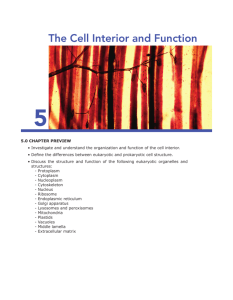Final Cytoplasm and Cytoskeleton
advertisement
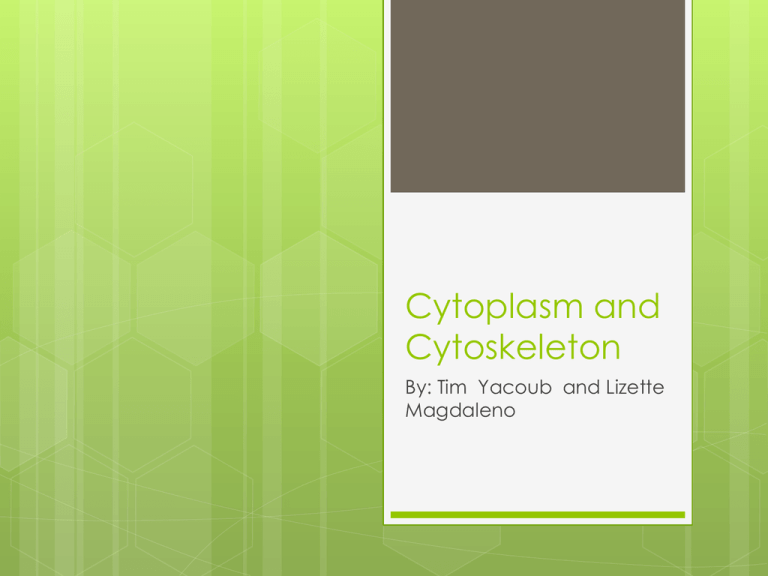
Cytoplasm and Cytoskeleton By: Tim Yacoub and Lizette Magdaleno Cytoskeleton Overview Cytoskeleton is a “network of fibers that extend[s] throughout the cytoplasm,”(113). It’s three structures: microtubules, microfilaments, and intermediate filaments It helps with the organization of activities, cell mobility, and structure of the cell Cytoskeleton: Microtubules In all eukaryotic cells, Shape: hallow tubes Made from protein called tubulin by centrioles Help shape and support the cell, Compression-resistant, function as roads for mobile organelles to move along. Aid in chromosome separation in cell division. Special arrangement of microtubules form flagella and cilia. Cytoskeleton: Microfilaments In all eukaryotic cells, Shape: thin solid rods Made from a globular protein: Actin, (twisted double chain of actin subunits). Functions as a tension bearer, networks inside the plasma membrane to support cell shape, this layer is called a cortex. Well known for its aid in cell movement, actin, along with Myosin interact, for example, to contract muscle cells Cytoskeleton: Intermediate Filaments Coiled cables, larger than microfilaments but smaller than microtubules Made of several proteins similar to keratins Only in some animal cells , bears tension (like microfilaments) More of a permanent structure within the cytoskeleton Reinforces shape of cell, and anchors certain organelles within the cytoplasm Cytoplasm Overview Cytoplasm is “the contents of the cell bounded by the plasma membrane, in eukaryotes, the portion exclusive of the nucleus.” (G-9) Cytoplasm: Structure It is the Fluid where the cellular organelles are suspended. It fills up all the spaces in the cell that are not being filled by the organelles 3 Residents of Cytoplasm: 1.Cytosol 2.Organelles 3.Cytoplasmic Inclusions Cytoplasm: Characteristics Fluid substance that fills the space between the cell membrane and cellular organelles High percentage of water It is colloidal It contains proteins 90% water and 10% organic and inorganic compounds Cytoplasm: Zones Plasmogel- peripheral zone of cytoplasm that is thick and jelly- like Plasmosol- zone is thin and liquefied Cytoplasm: Function Site of many biochemical reactions Place where cell expands and grows Provides a medium for organelles to remain suspended Aids in movement of different cellular elements Break down macromolecules Transport of genetic material




